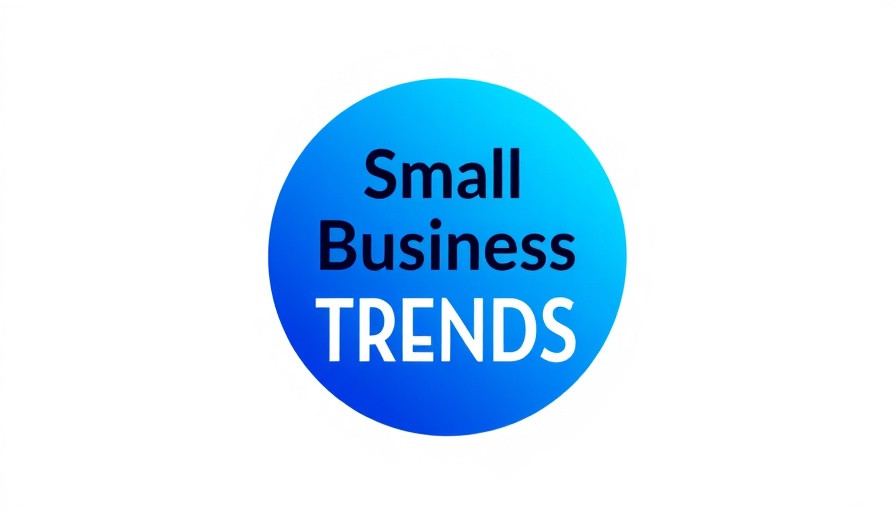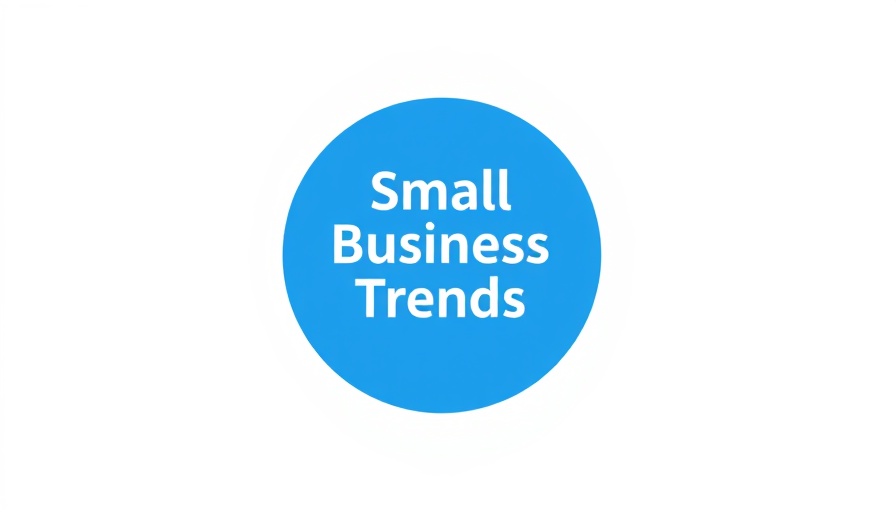
Revolutionizing Business Success Through Small Shifts
In today's rapidly evolving business landscape, the mantra of "small shifts lead to significant transformations" has never been more relevant. With the rise of artificial intelligence (AI) and automation, minor adjustments in business operations can yield remarkable improvements in efficiency, employee morale, and ultimately, profitability. This article explores how embracing incremental changes can position your company ahead of the competition, especially for those tech-savvy individuals eager to innovate.
Understanding the Power of Incremental Changes
Small shifts can enhance various aspects of your business, ensuring that improvements are sustainable. For instance, introducing AI marketing solutions such as automated email campaigns can save time while reaching a larger audience. By tweaking your existing processes rather than overhauling them, you can optimize operations and foster a culture of innovation. These incremental changes allow businesses to better respond to market fluctuations and improve customer experience without putting undue pressure on resources.
Effective Team Communication as a Catalyst
Communication is crucial in any business environment. Implementing collaboration tools like Slack or Microsoft Teams represents a relatively minor shift that can lead to remarkable improvements. By encouraging regular check-ins and open discussions, employees are more likely to share insights that can lead to better practices. The infusion of AI-driven communication tools can further streamline interactions, allowing for real-time collaboration and faster decision-making.
Analyzing Business Practices for Greater Efficiency
Regular assessment of business operations is vital for identifying inefficiencies. Utilizing AI analytics tools enables teams to gather feedback continuously and pinpoint areas for optimization. By understanding patterns in data, businesses can target resources more effectively, ensuring that actions align with overarching goals. This proactive approach to business management can also preemptively solve problems before they escalate.
Setting Measurable Goals for Continuous Improvement
To facilitate ongoing success, setting and monitoring realistic, measurable goals aligned with your business model is essential. Key Performance Indicators (KPIs) act as compasses for tracking progress. With advancements in AI, businesses can set up dashboards that visualize these metrics, making it easier to identify where shifts are necessary. Regularly reviewing these goals encourages adaptive thinking and allows organizations to pivot quickly as needed.
Practical Examples of Successful Small Shifts
One of the best ways to understand the impact of small shifts is through real-world examples. Consider a company optimizing its website funnels; even modest adjustments, such as refining user interface elements or enhancing loading speeds, can lead to significant increases in user retention and conversion rates. Similarly, improving customer service processes through AI-driven chatbots not only expedites responses but also enriches customer experience by providing tailored assistance.
Welcoming AI Into Your Business Strategy
The integration of AI content generation—be it in blogs or video formats—offers a new avenue for driving engagement. By harnessing AI tools for content creation, businesses can keep audiences informed while generating high-quality material at scale. This not only boosts marketing efforts but also improves brand visibility across digital platforms. Embracing the latest in AI-driven technology is essential for staying relevant and competitive.
Fostering a Culture of Continuous Innovation
Innovation doesn’t have to come in large, disruptive waves; it can stem from a foundation of consistent improvements. Encouraging team members to contribute ideas and take ownership of small projects can yield unexpected advancements and boost overall job satisfaction. The involvement of staff in the innovation process not only strengthens team cohesion but also harnesses a diverse range of perspectives that can lead to effective solutions.
Future Trends: Preparing for Tomorrow's Challenges
As technology continues to evolve, the necessity for businesses to adapt becomes more pronounced. Predictions suggest that companies that prioritize small, consistent shifts will not only withstand challenges but thrive in an increasingly competitive environment. Focusing on automation and AI will be integral in shaping the future operational landscape. Moreover, companies that embrace these trends early can secure a first-mover advantage, positioning themselves as leaders in their sectors.
In conclusion, small shifts in business strategy can produce profound outcomes. By leveraging technology and fostering a culture of incremental improvement, businesses can enhance efficiency, encourage teamwork, and ultimately drive profitability. Tech-oriented individuals looking to stay at the forefront of innovation should consider incorporating these principles into their business practices.



Write A Comment